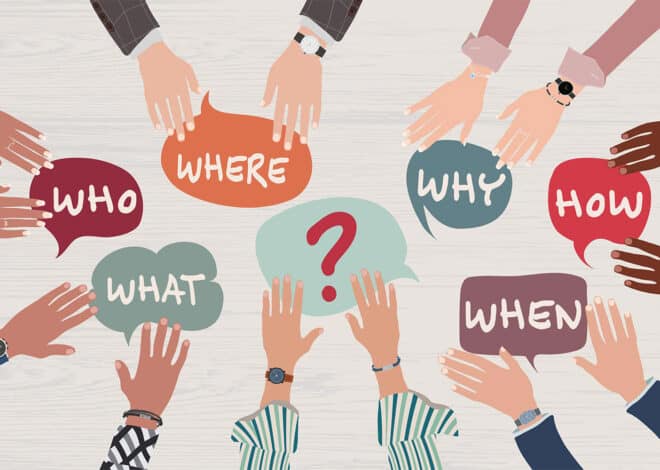The MONGO Dilemma: To Collaborate or Not?
Many nonprofits overlook the opportunity to partner with existing organizations in favor of creating their own programs and solutions.

When does it make sense for your nonprofit to partner up — and when should you go your own way?
Have you ever come across the term MONGO? It refers to the people who need to create “my own NGO” (nongovernmental organization) rather than expand or strengthen existing work. Recently, a well-known nonprofit with a history of helping African farmers in high-poverty areas increase their income and sustainability told me that their nonprofit wanted to add a program to educate local farmers’ children. When I inquired about their partnering NGO for this program, they mentioned creating it themselves, drawing from best practices.
I couldn’t help but wonder why: after all, there are so many amazing, proven organizations with local leadership that have perfected children’s education in Africa. Why not strengthen the work in their own lane while trusting and empowering others as programmatic partners?
This led me to a deeper question: what would happen if we all sought partnership first, before starting something new, and potentially, duplicative?
Statistically, there is no shortage of collaborations. According to a 2014 report from Bridgespan, 91 percent of the nonprofit leaders and funders surveyed engaged in some form of collaboration, and at least 75 percent of them also viewed collaborations as largely successful. The appetite to partner is out there. So, when does it make sense to partner—and when should you go your own way?
Success means different things, depending upon the collaboration.
Partnerships can take a number of different forms. On the one hand, you have the more formal mergers, co-locations, and strategic alliances, which usually also require mutual accountability. On the other, you have the more informal, separate accountability of referral networks and informal coalitions, committees, and informal networks.[1] Let’s take a closer look at three different kinds of collaborations—as well as what they look like in practice.
A Coalition to Share Resources
Simply put, partnerships can create clarity and streamline efficiencies to enhance impact. For example, a coalition of nonprofits can expedite fundraising and condense resources.
When I lived in Boulder, Colorado, I learned of a coalition that the community was very proud to support. Many students from low-income families do not have the school supplies they need for school. Every year, various organizations solicited funds for supplies, with new organizations springing up every year. Four organizations—Impact on Education, Extras for Education, the Sister Carmen Community Center, and Foothills United Way—decided to join together to create a single, joint program called Crayons to Calculators that would serve all students in need of supplies, without gaps or duplication of effort.
In its fourth year of operation, Crayons to Calculators provided a backpack filled with school supplies to every student in the district who needed help. Through affiliated programming, both fundraising and service delivery have been streamlined and simplified, saving staff time and expenses while avoiding duplicated efforts.
Joint Partnership to Scale Programming
Among the most celebrated model of partnership is scaling a proven program among partner organizations. This form of partnership usually avoids the trap of reinventing the wheel and ends up saving organizations time and money trying to create a new program.
One example of this is Street Business School (SBS), an organization I helped expand in 2014 through 2019. SBS sought to grow beyond Kampala, Uganda, by bringing its proven entrepreneurial education program for women living below the poverty line to other organizations interested in learning the program and customizing it for their local community. We chose a social franchise model, in which other NGOs could pay between $1,500 to $5,000 to learn the program, join the network, and receive a year of consultative implementation support. The 2015 pilot proved that demand among NGOs existed, so we launched a large-scale expansion effort across the global south. Since 2015, more than 200 NGOs have partnered to become SBS implementation partners in 33 countries including the world’s largest NGO, Bangladesh Rural Advancement Committee (BRAC).[2] [3]
It can be very difficult to make this kind of partnership work. Organizations must:
- find the right partner;
- create mutually beneficial agreements that specify roles and responsibilities;
- invest staff time in customizing the program; and still
- focus on the operations to keep costs down and impact high.
For this type of partnership, the return on investment typically is not immediate; rather it is a long game of capacity building and investment. SBS did not go into this collaborative approach to achieve scale lightly. The organization made it a top priority. As a result, they have achieved success through continuous devotion of resources, constant adaptation, and fortitude.
Networks Cover the Gaps
Some of the simplest yet most brilliant partnerships come from organizations that do great work in their own lane and refer out to other strong organizations for added services.
As a philanthropic advisor, I get to recommend giving opportunities to funder clients seeking great social impact opportunities. The UMOM Day Center is one such recommendation I made in 2022. UMOM claims to provide 75 percent of the homeless families in the Phoenix Metro area with housing, job training, and support services. With such a high volume of clients, they also need to offer childcare and after-school programming. Instead of trying to build and fund this program from scratch, UMOM has partnered with the Boys and Girls Club of the Valley to provide more holistic support services for their clients’ children. Consequently, UMOM supports hundreds of children daily without expending additional resources or brainpower on creating a new program. They do what they do well, and they partner for the rest.
And UMOM CEO, Jackson Fonder, knows it. When I asked him for advice, he said, “We don’t need to be the best in every category. There are already great leaders serving children and providing healthcare services. We are exceptional at eliminating homelessness for families. Keeping ourselves focused on that goal is paramount for us, which is why we partner with other organizations to better serve our families.”
I can’t help but agree. Oftentimes, nonprofits feel like they have to be excellent at all things, perhaps fearing they will look ineffective if they refer their clients to other organizations for additional programming. But it is important to note that leadership is just as much knowing when to say “yes” as it is knowing when to say “this seems like a program for our partner organization.”
What are some of the benefits—and challenges—of teaming up?
From these three examples, it makes sense that many in the sector—including leaders, grantmakers and philanthropists—are on-board with collaboration in any number of its forms. In fact, many probably already recognize the numerous benefits to partnership. For example, since the Great Recession of 2008, funders such as Fidelity Charitable and the Lodestar Foundation have expanded to create more collaboration opportunities that aim to generate more efficient operations and/or greater scale of positive social change.[4]
Of course, collaboration is not always easy. In the aforementioned Bridgespan report, the most common obstacles to building sustained partnerships include a lack of funder support, the difficulty of finding the right partner (nonprofits rated this as their highest barrier), and the challenges of saying “no” to well-intentioned funders when partnering doesn’t make sense.
The Need for Funder Support
It all boils down to this: without active support from funders, collaborations can fizzle out and become a source of frustration for all involved. This means we must constantly articulate to our funders why collaborations are so important as well as what funders can do (besides fund, of course) to best support these partnerships.
Here are three ways nonprofits might ask for (or funders might offer) help to support collaborative capacity:
- Help make connections, but don’t force them.
- Offer core support and flexible, long-term funding to grantees.
- Provide necessary resources to support and enable collaboration. [5]
While there is an appetite among nonprofit organizations to learn more from one another and to explore streamlining programs and operations, funders have the unique ability to raise the subject, convene thought leaders and nonprofit organizations, and support the research, especially if they are willing to take the risk with an exploratory gift. That is, if funders want to encourage aligned efforts, they need to analyze their own messaging, assessing the degree to which they are encouraging a “go-it-alone mindset.”
At the end of the day, collaboration requires support. Funders need to encourage nonprofit leaders—and nonprofit leaders need to encourage each other—to ask for the support they need.[6] The best partnerships offer a clear mission greater than any one organization, and this monumental task must be both implementer-led and funder-supported. So, to the implementers: ask for what you need. And to the funders: listen.
Ready for collaboration? Here are core questions to ask before partnering up.
For social sector leaders considering collaboration, consider this checklist (as described by Collective impact) as well as each aspect’s correlating questions:
Start with a common agenda.
Bringing different actors together always runs the risk of surfacing conflicting opinions. By starting with a shared goal, partners are more likely to stay on point.
In one of the previous examples, the Boulder County education organizations came together to increase student access to low-income school supplies. This was their common agenda that set the foundation for all future decisions.
Before checking this box, ask yourself: What are we all committed to achieving with this collaboration?
Establish shared measurement.
It is one thing to articulate a common agenda; it is another to agree upon milestones that measure your progress along the way. Establishing shared measurement gives everyone either an opportunity to course correct together or a moment to pause and celebrate your shared successes. Believe me—both are important for long-lasting change.
Before checking this box, ask yourself: What are our shared goals and shared milestones to monitor progress?
Foster mutually reinforced activities.
It isn’t a collaboration if involved parties are all doing their own thing. For example, SBS partners with other organizations to implement their entrepreneurial program, expecting partners to offer all eight of the program’s modules. If all eight modules are not taught, the partner organization cannot call itself an SBS partner. Both organizations, SBS and the partner, sign an agreement to this effect.
Before checking this box, ask yourself two questions: What is critical to the collaboration (i.e. program values, behaviors, and tenets), and what is flexible (i.e. implementation timing, demographics, and location)?
Sustain continuous communication and reporting.
It is important to schedule monthly or quarterly check-in calls with your partners to learn, adapt, and forge forward together. Consider issuing a collaboration report every quarter that features lessons learned and goals achieved. This way, everyone knows that progress will be broadcast and celebrated.
Before checking this box, ask yourself: Am I willing to make communication king via actionable steps?
The partnership has a backbone (i.e. a personnel structure).
As the leader, you need to make sure you have or can raise the resources to successfully own the collaboration. Essentially, a successful partnership must have a team to align and coordinate the project. This means you have to invest the human resources for effective project management, ensuring the intended outcomes have full ownership within the team.
If the funding is not readily available, ask yourself two things 1) can I get it, and 2) how much is it costing me to not partner? Remember, there is always an opportunity cost in the decisions not made.
This is to say that before checking this box, you have to ask yourself: Is the backbone there?
Collaboration means innovation and increased impact.
Within the nonprofit sector, collaboration is one of the clearest opportunities to innovate and maximize impact. However, if a collaboration is going to work, it is the leadership’s responsibility to approach it with aligned goals, resources, and a commitment to clarity to achieve its greatest possible outcomes.
Imagine what you could do if you asked a funder for $5,000 to simply research the landscape[7] and identify potential partners who could augment your existing work. This gift could be geared towards innovation, increasing efficiencies, expanding reach, and so on. I bet you would have some exceptional ideas for change and a strong fundraising ask at the end of that learning opportunity. I know I have.
Sources
[1] For a visual representation of this differentiation between formal and informal collaborations, see the Institute for Community Health and Wellbeing’s Modes of Interorganizational Collaboration.
[2] Leadership Training: Support Women Entrepreneurs Globally | Street Business School
[3] Note: You should always check with your insurance agent to make sure you understand whose insurance applies in the event of a claim.
[4] For a more comprehensive list of potential benefits, check out this Forbes article, which identifies operational expense savings, program enhancement, outreach efficiency, and breadth among the main reasons why nonprofits might team up.
[5] For more information, see What Capacities do Nonprofits Need in Order to Collaborate? • Grantmakers for Effective Organizations (geofunders.org).
[6] Want to hear more about the kinds of things nonprofit leaders should ask of funders? Check out this article!
[7] For more on the importance of this strategic inquiry, check out this article.
About the Author
Tifany Boyles has a Master’s degree in Philanthropic Studies from the Lilly Family School of Philanthropy at Indiana University Purdue University Indianapolis (IUPUI) concentrating on social innovations for gender equality. She has certifications in Women’s International Health and Human Rights through Stanford’s Center on Social Innovation and Women in Innovation through Yale’s School of Management. She also has a Bachelor’s degree from Pepperdine University.
Tifany founded Red Philanthropy (Red) because she believes in the transformative power of philanthropy. Through Red, Tifany advises philanthropists on their giving strategies and partners with their nonprofit beneficiaries to increase impact. Formerly, she was the Vice President of CCS, a large-scale international consulting firm to the nonprofit sector. Among her different nonprofit leadership experiences, Tifany led the Eliminate Project as Executive Director which was a $110 million global project for Kiwanis International and UNICEF to eliminate maternal and neonatal tetanus (MNT).
Tifany enjoys learning of innovative solutions to create gender equality and/or poverty alleviation. She is a passionate supporter of the arts and loves the great outdoors, which she regularly enjoys with husband, David, and their dog Finch. Tifany lives in and loves Colorado.
Articles on Blue Avocado do not provide legal representation or legal advice and should not be used as a substitute for advice or legal counsel. Blue Avocado provides space for the nonprofit sector to express new ideas. Views represented in Blue Avocado do not necessarily express the opinion of the publication or its publisher.











